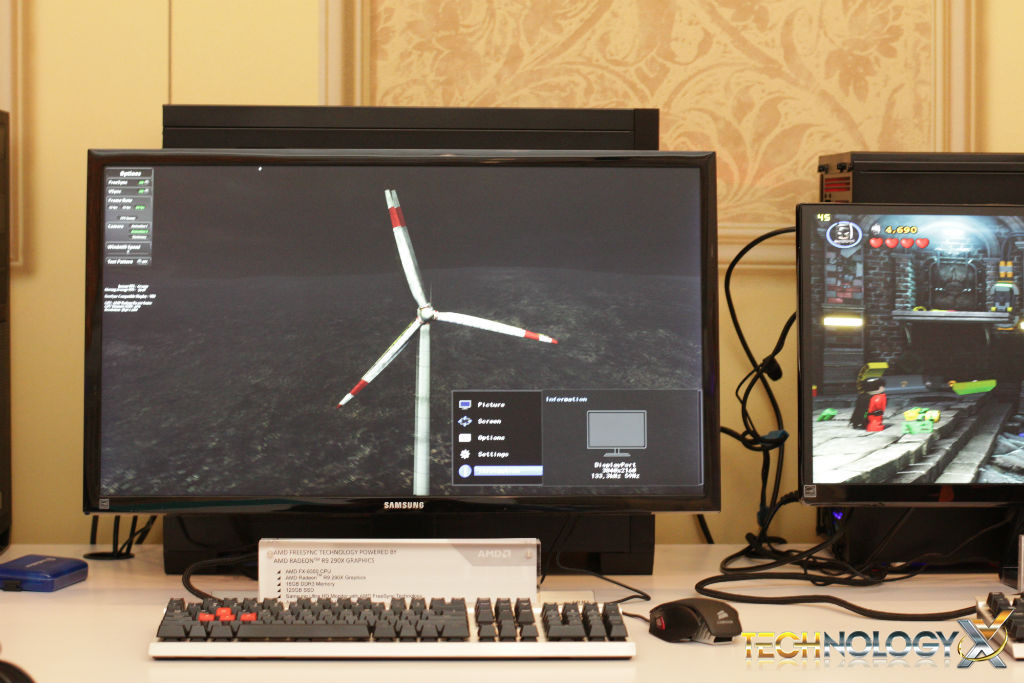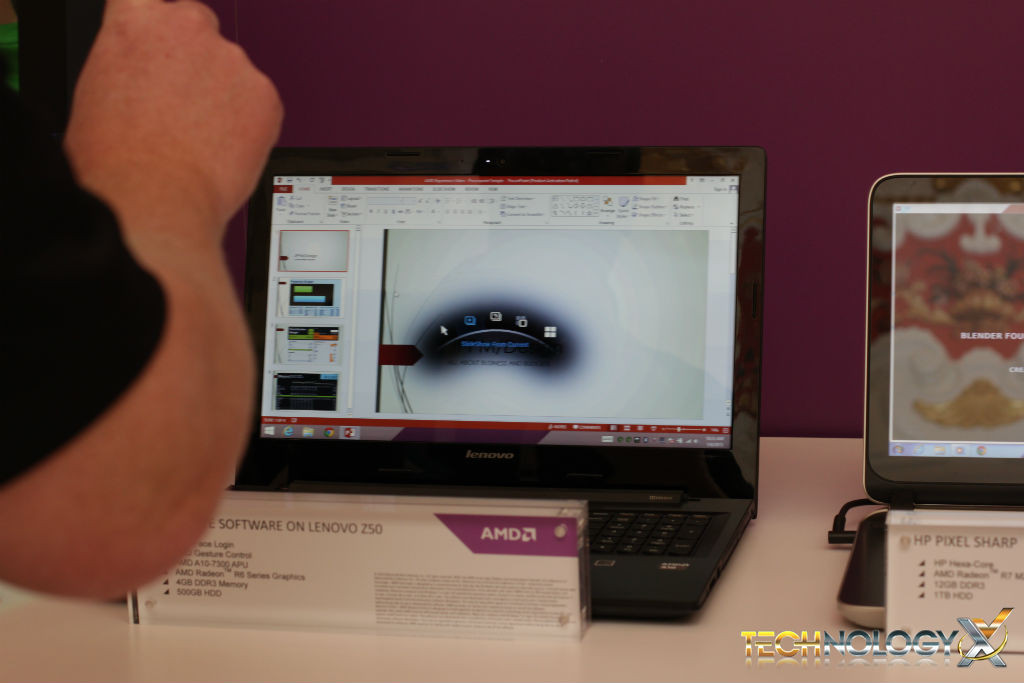We stopped by AMD’s booth at CES 2015 today and saw a series of AMD hardware demos, including a series of demos running on the some of the recently announced FreeSync monitors by AMD’s partners, Samsung, LG and BenQ.
For the most part, much of what AMD showed off today is not new. In fact many of their product presentations at this year’s CES are reiterations of last years. That being said, there’s still plenty of interesting stuff here.
THE FIRST FREESYNC MONITORS
Recently, Samsung, LG, BenQ and other monitor manufacturers have unveiled their all-new gaming monitors using AMD’s FreeSync technology, which is a cheaper and more open alternative to nVidia’s proprietary G-Sync, which requires expensive hardware to work. One of those new displays, the Samsung S590, a 23.6″ 4K 60Hz panel, is being used to display the demo shown above. The demo, powered by AMD hardware, displays the difference between having FreeSync enabled and disabled. The results are stark and while they can’t be shown in a still image, we were able to see a large difference in smoothness of the animation of the pin-wheel.
AMD also points out that one of the biggest advantages of a technology like FreeSync, is that it can make games much more playable on less powerful hardware. Where playing a game at 30FPS or even 40 FPS on a 60Hz monitor can sometimes be stutter-y and unpleasant, FreeSync eliminates this by removing the fixed refresh rate of standard monitors and allowing the GPU to match how many times the display refreshes with how many frames it can output, this removes the need to repeat the same frame twice. The results are impressive.
GESTURE SOFTWARE
Another interesting demo was one using a Lenovo Z50 notebook, powered by AMD hardware. It featured what AMD calls “AMD ELITE” software, which enables Kinect-like gesture recognition through the laptops standard built-in camera. There’s no fancy 3D camera sensors or anything, just an AMD APU providing the necessary horsepower.
The gestures include the context-aware menu that will come up in certain applications when you raise your hand, you can then wave your finger left or right and highlight the desired action. This can be used for media applications for displaying playback controls or PowerPoint presentations, as with our demo. You can also scroll through the Windows 8 Start Screen or use one finger to control your mouse pointer, by moving it around in the air. It worked quite well and definitely seems promising.
We’ll be bringing you more up-to-the-minute coverage of CES 2015 all this week, so be sure to keep checking back!
 Technology X Tomorrow's Technology Today!
Technology X Tomorrow's Technology Today! 

